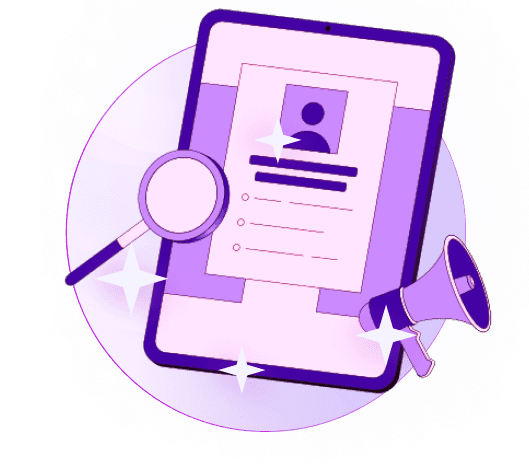Blogs
Articles

3 Steps to Implement RB2B Website Traffic De-Anonymization Successfully
As a business professional, you know that online traffic is essential. But what if I told you that most of that precious website traffic is anonymous? This anonymity can make it incredibly challenging to understand and connect with your audience, which ultimately hinders targeted marketing efforts.
By leveraging RB2B (Relationship-Based Business to Business) website traffic de-anonymization, you can turn those faceless visitors into valuable leads.
In this blog post, I will walk you through three simple steps to successfully implement this strategy, ensuring you make the most out of your website traffic.
Understanding the Purpose of Traffic De-Anonymization
Before diving into the steps, let's clarify what traffic de-anonymization is. In essence, it's the process of turning anonymous website visitors into identifiable prospects. Imagine having insights into who visited your site, what they were interested in, and how you could serve their needs better. This knowledge allows you to tailor your marketing efforts more effectively. So, how do you start this journey? Let's break it down into manageable steps.
Step 1: Utilize the Right Tools for Data Collection
The first step in the de-anonymization process is to gather quality data. This starts with implementing the right tools on your website. Platforms like Google Analytics are a great starting point as they provide insights into your site’s traffic patterns, including geographic locations and user behavior. However, if you want to get more precise and action-oriented data, consider specialized de-anonymization tools designed for RB2B marketing.
These tools help track visitor details such as company names, job titles, and even contact information. This deeper level of insight allows you to build a more comprehensive picture of your audience. For instance, knowing that a visitor from a tech firm engaged with your software page can help you tailor communication to address industry-specific pain points.
Tip: Look for tools that integrate seamlessly with your existing tech stack. Using an AI-powered sales prospecting solution, like Persana.ai, can help generate targeted lead lists, enrich your data, and automate manual outreach processes. Imagine how much time you could save while ensuring your lead generation is hitting the mark!
Step 2: Segment Your Audience for Targeted Messaging
Once you have gathered the necessary data, the next step is to segment your audience. Not everyone visiting your website is the same. Some may be existing customers looking for new products, while others might be potential leads just browsing. By segmenting your audience based on their behaviors, industries, or even their position in the sales funnel, you can create targeted marketing campaigns that resonate with specific groups.
For example, let’s say you've identified a group of visitors from the financial industry interested in your compliance software. You can tailor your emails and online ads to focus on their unique challenges and how your solution can help them. This personalized approach not only enhances engagement but also increases the likelihood of conversion.
Practical Insight: Utilize tools that allow for easy segmentation. With Persana.ai, you can enrich your data and gain insight into the specific needs and interests of your prospects, making it easier to craft messaging that appeals directly to them. Automating these processes means you can spend more time strategizing rather than getting bogged down in manual segmentation.
Step 3: Implement Continuous Feedback and Optimization
With your audience segmented and targeting in place, it’s crucial to keep the cycle of improvement going. Gather feedback from your marketing campaigns to see what’s working and what isn’t. This could be achieved through A/B testing your emails or landing pages or by analyzing engagement metrics.
Listen to your audience’s responses to your messaging. If certain approaches aren’t resonating, be flexible enough to adapt your strategy. Continuous optimization is key to long-term success, and embracing feedback will help you refine your marketing efforts over time.
Final Thought: Integrating feedback mechanisms into your existing systems can streamline this process. Solutions like Persana.ai automate the gathering of insights, allowing for timely adjustments to your outreach efforts. The more data you have, the better informed your decisions will be, and that can make all the difference in a competitive landscape.
Wrapping It Up: Your Path to Successful RB2B Marketing
Implementing RB2B website traffic de-anonymization might sound complex, but by breaking it down into these three steps, you can turn anonymous visitors into engaged leads. Focus on collecting quality data, segmenting your audience, and continuously optimizing your campaigns for the best results.
As you embark on this journey, consider using tools that enhance your current processes. With Persana.ai, you gain an edge in automating the tedious parts of lead generation, data enrichment, and integration with outbound tools. This allows you to focus on what really matters: building relationships and driving sales.
Remember, targeted marketing is all about understanding who your audience is and what they want. By leveraging traffic de-anonymization, you can create personalized experiences that lead to more meaningful connections and ultimately, increased revenue. Happy de-anonymizing!

Create Your Free Persana Account Today
Join 5000+ GTM leaders who are using Persana for their outbound needs.
How Persana increases your sales results
One of the most effective ways to ensure sales cycle consistency is by using AI-driven automation. A solution like Persana, and its AI SDR - Nia, helps you streamline significant parts of your sales process, including prospecting, outreach personalization, and follow-up.



